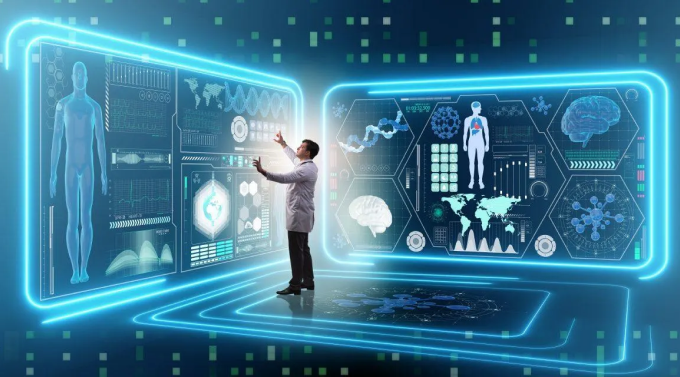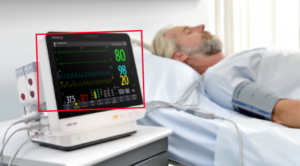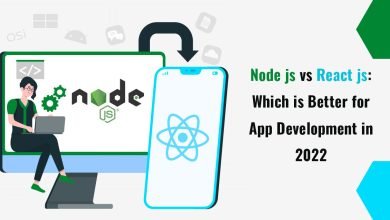Major Ways AI Video Analytics Can Improve Hospital Safety and Security

AI video analytics holds significant potential in enhancing safety and security measures within hospitals. By leveraging advanced algorithms and machine learning techniques, AI-powered video analytics systems can provide real-time monitoring, threat detection, and proactive response capabilities.
Here are several major ways AI video analytics can improve hospital safety and security:
Patient Monitoring and Safety:

AI video analytics software can assist in patient monitoring by tracking movements and behaviors in hospital rooms and corridors. These systems can detect falls, unusual behaviors, or signs of distress, allowing staff to respond promptly to potential emergencies. Additionally, AI can analyze patient vital signs remotely through video feeds, providing early warnings of deteriorating health conditions.
Restricted Area Monitoring:
Hospitals have restricted areas such as medication storage rooms, operating theaters, and staff-only zones. AI video analytics can enforce access control by monitoring these areas for unauthorized personnel. Any attempt to access restricted zones can trigger alerts, enabling security personnel to intervene swiftly and prevent breaches.
Asset Protection:
Hospitals house expensive medical equipment and valuable assets that are vulnerable to theft or misuse. AI-powered video analytics systems can detect suspicious activities around equipment, such as tampering or unauthorized removal. By promptly identifying such incidents, hospitals can prevent loss and ensure the availability of critical resources for patient care.
Visitor Management:

Effective visitor management is crucial for maintaining hospital security and patient privacy. AI video analytics can streamline visitor registration processes and enhance monitoring of visitor movements throughout the facility. Suspicious behavior, such as loitering in restricted areas or attempting to access patient rooms without authorization, can trigger alerts for security personnel to investigate further.
Crowd Monitoring and Social Distancing:

With the ongoing concern of infectious diseases, maintaining proper crowd management and social distancing in hospitals is essential for preventing the spread of illnesses. AI video analytics can monitor crowd density in waiting areas, corridors, and cafeterias, ensuring compliance with social distancing guidelines. Alerts can be triggered when overcrowding occurs, allowing staff to take corrective actions promptly.
Emergency Response Optimization:
In the event of emergencies such as fires, natural disasters, or security threats, AI video analytics can play a vital role in optimizing emergency response efforts. By automatically detecting incidents through video feeds, these systems can provide real-time situational awareness to emergency responders. Integration with other systems such as fire alarms or access control enables faster and more coordinated responses, potentially saving lives.
Behavioral Analysis and Threat Detection:
AI algorithms can analyze individual behaviors captured in video footage to identify potential threats or abnormal activities. This includes detecting aggressive behaviors, loitering in sensitive areas, or suspicious packages left unattended. By continuously monitoring video feeds, AI systems can proactively identify security risks and issue alerts for immediate intervention.
Compliance Monitoring:
Hospitals are subject to various regulations and guidelines related to safety, security, and patient privacy. AI video analytics can assist in compliance monitoring by ensuring adherence to regulatory requirements such as HIPAA (Health Insurance Portability and Accountability Act) and Joint Commission standards. By tracking activities related to patient care and security protocols, hospitals can demonstrate compliance and mitigate risks of non-compliance penalties.
Post-Incident Analysis and Forensics:
AI video analytics can aid in post-incident analysis by providing detailed footage of security incidents or adverse events. This includes reviewing footage to understand the sequence of events leading up to an incident, identifying individuals involved, and evaluating response procedures. Such insights can help hospitals improve security protocols, train staff, and prevent similar incidents in the future.
Integration with Security Systems:
Integrating AI video analytics with existing security systems such as access control, intrusion detection, and video surveillance cameras enhances overall security capabilities. By consolidating data from multiple sources and applying AI-driven analysis, hospitals can create a comprehensive security ecosystem that detects, responds to, and mitigates potential threats effectively.
Conclusion:
AI video analytics holds immense potential for revolutionizing safety and security measures within hospitals. By leveraging advanced algorithms and real-time monitoring capabilities, these systems empower hospitals to proactively identify and address security risks, enhance emergency response efforts, and ensure compliance with regulatory requirements. Implementing AI video analytics not only strengthens hospital security but also fosters a safer environment for patients, visitors, and staff members alike.





![Photo of [LIVE]HS FOOTBALL> Westlake vs Akins live free HS Football on 09sep Friday](https://blogspinners.com/wp-content/uploads/2022/09/080222-HEAT-HS-FOOTBALL-PRACTICE-QT-9P-PKG_00.00.12.16-1-390x220.webp)